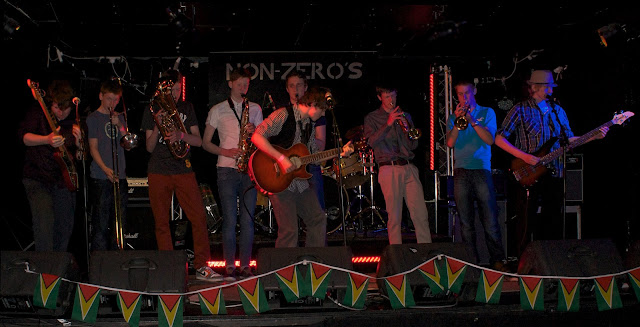Chenapou is a peaceful place, and sitting out on the steps at night to eat our dinner, beneath a starry sky, watching the flashes of distant lightening illuminating the horizon, is a real contrast to the hectic and noisy job of a primary 2 teacher. Instead of twenty voices shouting “Sir! Sir!” all we can hear are the noises of the jungle, the insects and the birds. Around us in the darkness little pinpricks of light appear and disappear; the fireflies going about their lives.
We are invaders here, as humans. However hard the village tries to claim this land as it’s own, the forest will always find its way in. The plants and animals see no boundary between jungle and village. Everywhere you look, there is life.
Every patch of land that is not regularly cleared is thick with vegetation, every trail is narrow and lines by towering trees on either side. The houses are hidden away in all directions with large tracts of wilderness between them.
| We occupy the left hand side of this building. |
| Wall, partially cleaned. |
Next to one of the doors we have a long table at which I'm writing, and a couple of slat windows which can be tilted to shut out or allow in the breeze. The main part of the room is large enough to be furnished with a desk, a bench and a rocking chair. This chair feels almost unbearably uncomfortable however, and I whack my shins on it every time I walk past. Above head height the room is criss-crossed by three washing lines.
Our bedrooms are the only parts of the house that still need to be washed down with bleach, and their floors and the only floors that still need all of the grime and dust brushed out from the cracks between the floorboards. They now feel horribly dirty compared to the rest of the house!
We sleep in our hammocks, stretched diagonally across the bedrooms over the top of the beds, now without their dirty looking mattresses, which we have banished to the empty part of the house next door. At night it gets quite cool and we tuck into our sleeping bags. This is blissful compared to sweating through the night as we did in Georgetown.
After a hot day's work at school, there is nothing more relaxing and refreshing than a dip in the cool water of the Potaro, and looking up and own to the endless rainforest around you, listening to the incredible sounds, feeling so free and distant from your old city life.
The people of Chenapou have already made us feel welcome. We have so far been gifted a bunch of bananas, a sour apple (nothing like our apples) and a couple of pears (more like an avocado). Lots of people in the village keep pet parrots and other colourful birds. Last Friday afternoon, whilst Ben and I tried our first bit of Cassiri, the local staple drink made from cassava, we met a green parrot who seemed to be able to say my name after a little training. The people also keep many chickens; the cockerels wake us up every morning, then peck around the yard for scraps of food. There are pet dogs, too, but they look dreadfully underfed.


















